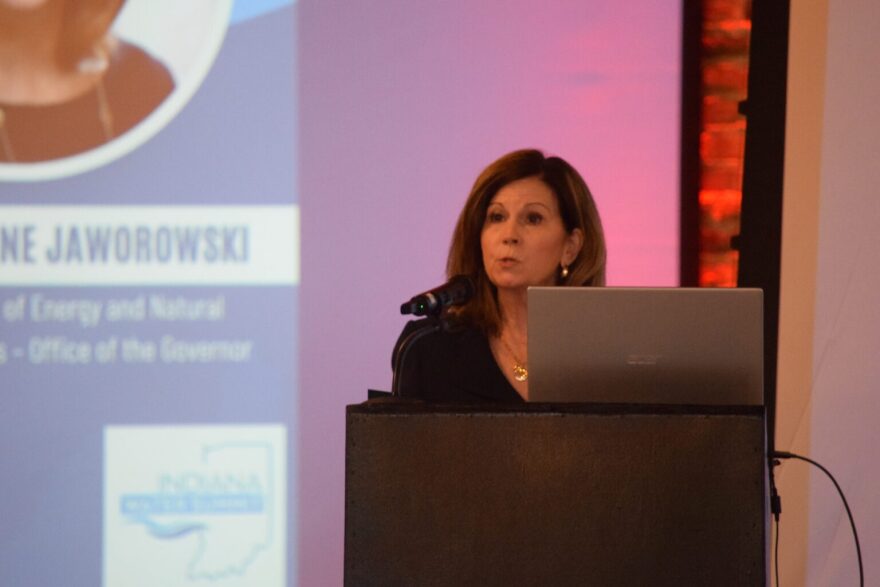Indiana Secretary of Energy and Natural Resources Suzanne Jaworowski told attendees at the annual Indiana Water Summit on Thursday that a pending statewide water plan must be “transparent, data-driven and developed collaboratively” in line with Gov. Mike Braun’s recent executive order.
“When I stepped into this role in January, the governor really painted a vision for his Freedom and Opportunity agenda, which includes delivering a more responsive, efficient state government, and a government that improves the quality and quantity of life for Hoosiers,” Jaworowski said. “That includes affordable and clean energy and water.”
She cited an executive order signed by Braun in April, which directs state agencies to create a statewide water inventory and management plan by the end of 2026. The planning framework is supposed to align utilities, industries, municipalities and other water users.
The executive order also mandates creation of a real-time, publicly accessible online data platform for water usage, infrastructure status and future demand projections.
“In essence, it means we’re coming together to collaboratively create an inventory of our current water usage, the future of water domains, and to better understand the availability of groundwater and surface water in all regions of Indiana,” Jaworowski continued.
Focusing on Indiana’s water resources
Braun’s order came amid growing concerns about Indiana’s water vulnerabilities.
A report released last week by the Alliance for the Great Lakes, for example, warned that Indiana’s water supply could soon face strain due to compounding demands from residents, agriculture, manufacturing, water-intensive data centers and climate change.
Indiana additionally grapples with nutrient and sediment pollution; wetlands losses; and waterway contamination.
The Hoosier State has historically lacked a comprehensive statewide water policy, unlike neighboring states, including Ohio, Michigan and Illinois — all of which have long-standing frameworks to guide water quality and usage management.
Jaworowski emphasized that water planning in Indiana should not come from “top-down mandates,” but instead be “a conversation that’s regionally driven.”
She said, too, that population growth is adding new pressure on resources, noting that Indiana gained more than 44,000 new residents in 2024 — marking the state’s fastest increase since 2008.
Involving ‘all stakeholders’
On flooding and wetlands, Jaworowski further acknowledged concerns about changing projections, though she emphasized that “the governor is extremely dedicated to preserving our wetlands and preserving our conservation areas.”
When asked for any standout solutions that have so far offered by stakeholders, Jaworowski specifically praised ongoing work with the Central Indiana Corporate Partnership but said that, “being able to look at what other states have done with policy … and regional water planning … has been most impressive to me.”
The secretary also made clear that local watershed commissions won’t be left out of the statewide planning process and are instead “key stakeholders in this discussion.”
“Our door’s open to all,” Jaworowski told the summit audience. “‘Stakeholder’ is not a hollow term. I recognize how important grassroots is in water planning.”
Indiana Capital Chronicle is part of States Newsroom, a nonprofit news network supported by grants and a coalition of donors as a 501c(3) public charity. Indiana Capital Chronicle maintains editorial independence. Contact Editor Niki Kelly for questions: info@indianacapitalchronicle.com.


